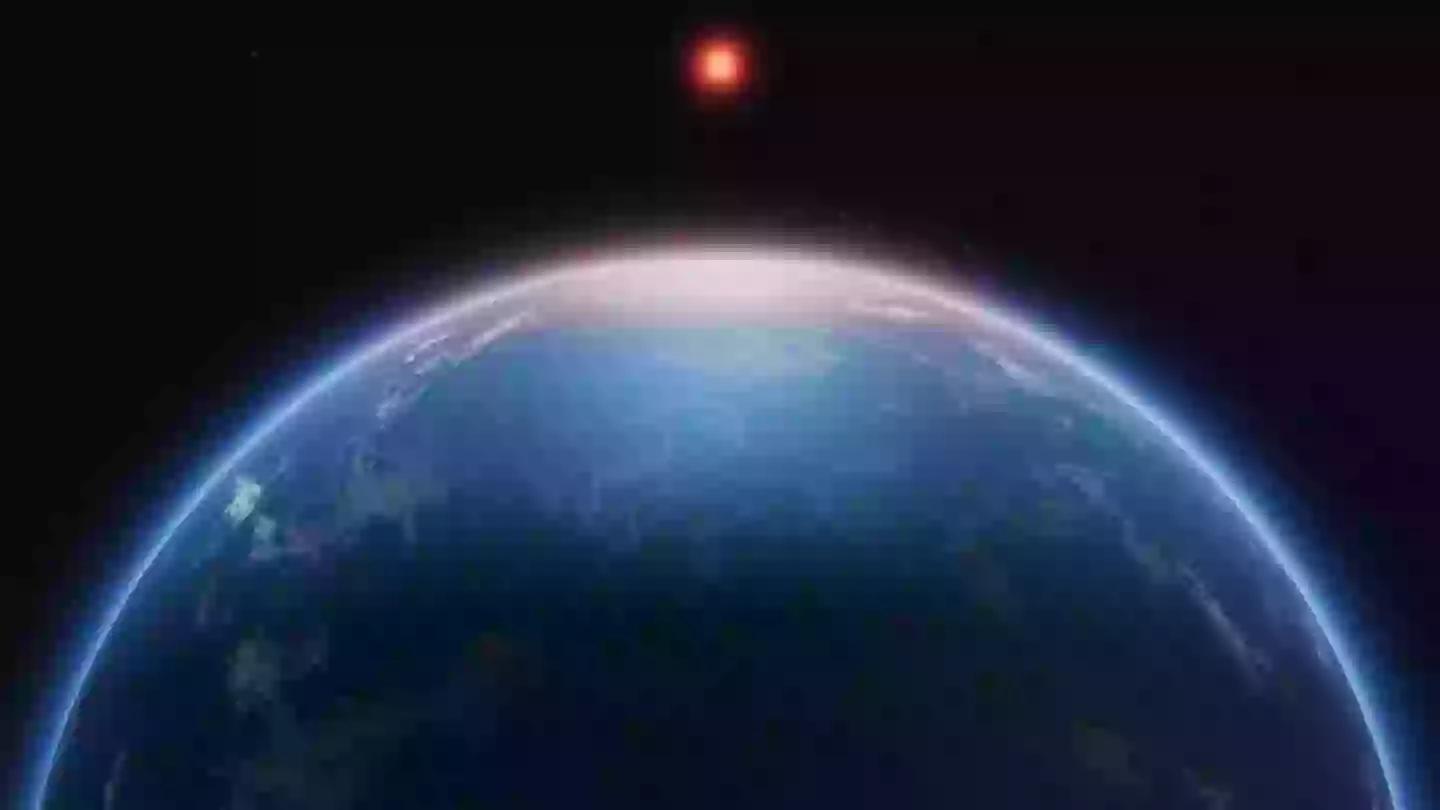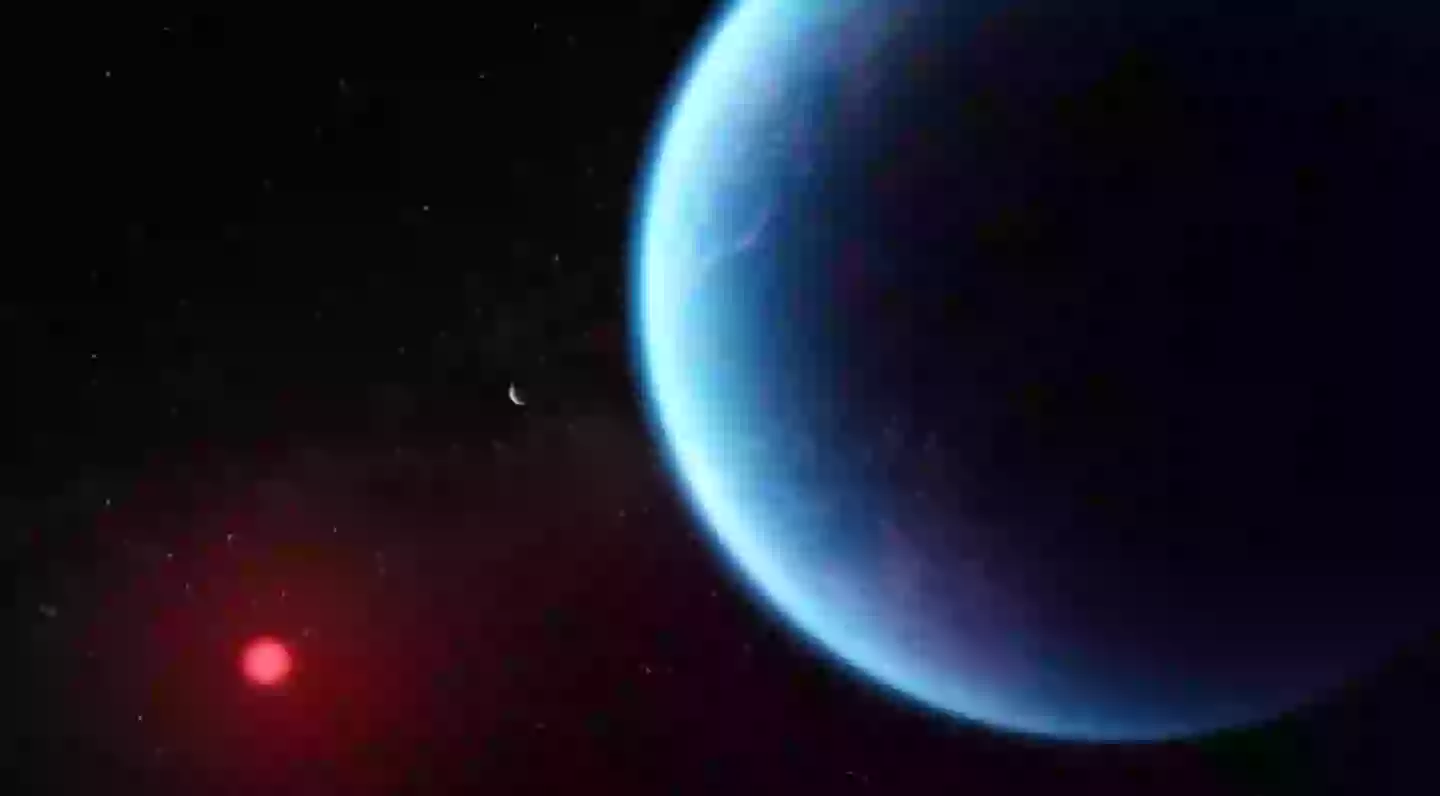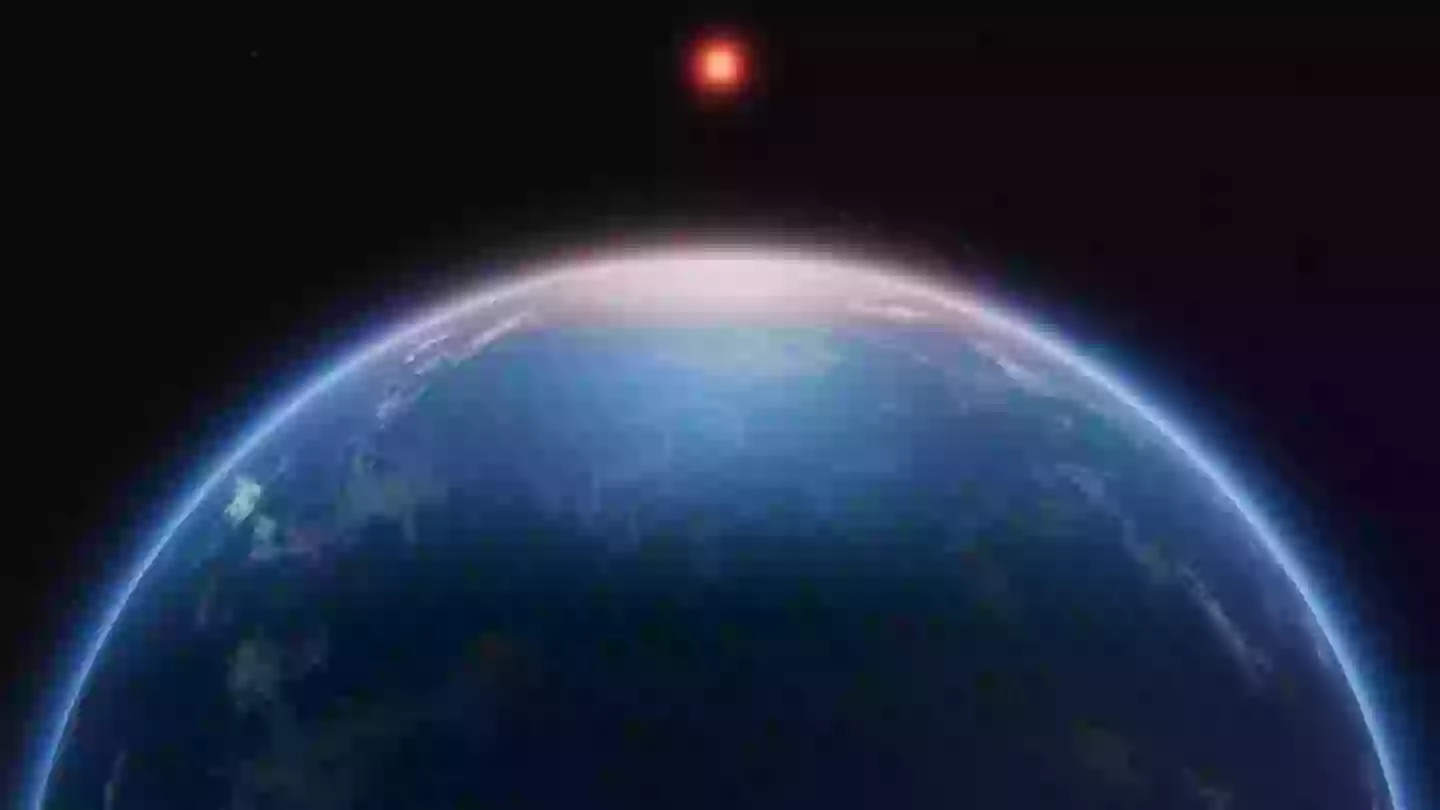"Intriguing Evidence of Life: James Webb Telescope Unveils Secrets of a Distant Alien World"
Ever pondered what’s out there in the vast universe, aside from the usual cosmic soup of stars and intergalactic dust? Here’s a mind-bender for you: NASA’s Kepler has found us a new neighbor, and by golly, it’s looking like a prime candidate for a cosmic road trip! Meet K2-18b, an exoplanet just a hop, skip, and about 124 lightyears away, with a whopping 99.7% chance of supporting life.
Now, while the thought of actually reaching this watery world sounds like something out of a sci-fi blockbuster, the fact that scientists think it’s a habitat for life is nothing short of thrilling. Imagine the potential for aquatic life, thriving in conditions that could be perfect for creature comforts… well, creature comforts if they’re okay with an average temperature of -2 degrees Celsius.
But hang on, before you start packing, there’s more to the story. This planet, named rather unimaginatively (come on, ‘K2-18b’?), has revealed not just water but a molecule called dimethyl sulfide, or DMS. This isn’t just any molecule; back home, it’s produced by some of the oldest life forms we’ve got, phytoplankton. And guess what? It’s present in the atmosphere of K2-18b in concentrations that would make Earth’s oceans jealous. Could K2-18b be teeming with alien life?
Scientists are debating this with bated breath, using advanced telescopes like JWST to get their next answer, hoping to confirm what would be one of humanity’s biggest scientific breakthroughs.
Intrigued, elated, and just a tad bit curious about what might be evolving in those distant, mysterious depths? So am I! There’s a whole universe of possibilities out there, and K2-18b might just be the key to unlocking some of them. LEARN MORE.
News recently broke that scientists discovered an alien planet that had the highest ever chances of human life, and it’s only 124 light years away.
While that may be out of reach for humans now, the fact that there is a ‘99.7 percent’ chance, according to astronomers at the University of Cambridge, is an outstanding breakthrough in the world of science.
It’s called K2-18b (catchy, I know), and it’s located in a faraway galaxy, orbiting a red dwarf star as part of the Leo constellation.
While the planet itself was discovered by NASA’s Kepler Space Telescope a good 10 years ago, it took until 2019 for water vapour to be found in its atmosphere.
This marked K2-18b as the first habitable-zone exoplanet discovered with water.
That’s right, we might be a step closer to discovering alien life.
K2-18b’s environment
The planet is about 2.6 times the size of our world, and it is said to be covered by oceans, though a year lasts just 33 days.
Scientists have pointed towards an apparent biosignature that is meant to signal life on the planet, while it is also believed that the planet receives around the same amount of starlight as we do from our Sun.
More promising signs.
It is thought that these conditions, as well as being covered in ocean to shield potential life from a thick, hydrogen-filled atmosphere, known as a Hycean world, would be perfect for any marine wildlife.
Scientists believe that the average temperature on K2-18b is around -2 degrees Celsius.

JWST uncovered more information about the planet (NASA)
What makes K2-18b habitable?
A molecule has been discovered called dimethyl sulfide (DMS) in the planet’s atmosphere, and it is believed to be the clearest sign of of living organisms outside our solar system.
You’d think with the universe being so vast that we’d have come closer, but this is genuinely the nearest we’ve been to a breakthrough.
DMS is produced on Earth by tiny algae, some of the most ancient organisms on Earth, dating back to around 3.5 billion years ago.
Known as ‘phytoplankton’, the microscopic organisms appear as coloured patches in the sea.
Speaking to The Sun, lead scientist Dr Nikku Madhusudhan at the University of Cambridge explained: This is a revolutionary moment. It’s the first time humanity has seen potential biosignatures on a habitable planet.
“There is no mechanism in the literature that can explain what we are seeing without life.
“It’s a question humanity has been asking for thousands of years. It’s a shock to the system. It takes time to recover from the enormity of it.”

The planet is said to be orbiting a red dwarf (NASA)
How was DMS discovered on the planet?
The chemical process to produce the biosignatures of both DMS and dimethyl disulphide (DMDS) are unknown, but astronomers used data from the James Webb Space Telescope (JWST) to discover them.
Their findings were so definitive that there’s only a 0.3 percent chance that they occurred by chance.
“We currently don’t know what the temperature of those oceans would be,” Dr Madhusudhan said.
“But we expect it to be slightly warmer than Earth.
“On Earth, extremophiles have been known to survive at very high temperatures, so that is not itself an issue.”
How are scientists seeing K2-18b?
Because of how close it is to its host star, scientists are watching the star in question and wait for the planet to cross across its face, with JWST picking up on the star’s brightness.
The starlight that is absorbed by the planet’s atmosphere then leaves ‘imprints’ so that astronomers can work out the gases that are present.
DMS and DMDS are found on Earth at about one part per billion, but these levels are actually found on K2-18b in 10 parts per million.

JWST has helped scientists observe the planet in question (Getty Stock Image)
More work to do
Dr Madhusudhan went on: “Given everything we know about this planet, a Hycean world with an ocean that is teeming with life is the scenario that best fits the data we have.”
He highlighted that this could result in us not being alone in the universe, though he aims to get the certainty level of 99.7 percent up to near certainty, leaving a probability of just 0.00006% that the results were found by chance.
Their observation took just eight hours of JWST time, as the scientist explained that they would need two or three more to be certain.
“We have to formally apply for JWST time and there will be a selection process,” he admitted.
The scientist added: “There are only around four windows of observation every year. So if these observations are approved, this would happen potentially over the next year.”
There’s still a lot that needs to be confirmed, but all in all, this looks promising.















